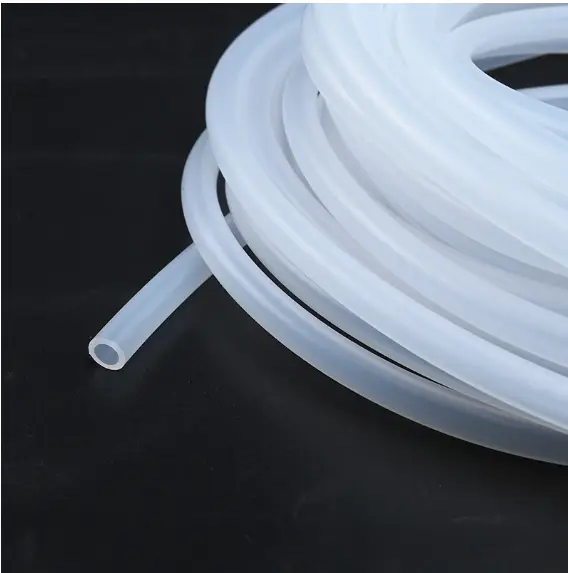Common Issues with Peristaltic Pump Tubes and Their Solutions
Peristaltic pumps are widely used in various industries for accurate and gentle pumping of fluids. One key component of peristaltic pumps is the pump tube, which is responsible for transporting the fluid from the inlet to the outlet. However, like any other equipment, peristaltic pump tubes are prone to certain issues that can affect the performance of the pump. In this article, we will discuss some common issues with peristaltic pump tubes and their solutions to help you maintain the efficiency of your pumping system.
Issue: Tube Wear and Tear
Tube wear and tear is a common issue with peristaltic pump tubes, especially in applications where abrasive or corrosive fluids are being pumped. Over time, the repeated squeezing and release of the tube by the pump can cause it to wear out, leading to leaks and decreased pumping efficiency.
To address this issue, it is important to regularly inspect the pump tube for signs of wear and tear, such as cracks, abrasions, or swelling. In addition, using the appropriate tube material for the fluid being pumped can help extend the life of the tube. For example, using a reinforced silicone tube for abrasive fluids or a chemical-resistant tube for corrosive fluids can help mitigate wear and tear and prolong the life of the pump tube.
Regularly replacing the pump tube based on the pump tubing manufacturer's recommendations is also important to prevent unexpected failures and maintain the performance of the peristaltic pump.
Issue: Tube Degradation
Another common issue with peristaltic pump tubes is degradation, which can occur when the tube material is not compatible with the pumped fluid. Certain fluids, such as solvents, acids, and bases, can react with the tube material, causing it to degrade over time.
To prevent peristaltic pump tubing degradation, it is essential to use the right material for the tube based on the compatibility with the pumped fluid. Conducting a thorough chemical compatibility assessment of the tube material and the pumped fluid can help identify potential risks of degradation and choose a suitable tube material that is resistant to the pumped fluid.
Regularly monitoring the condition of the pump tube and replacing it as needed can help prevent peristaltic pump tubing degradation and ensure the reliability of the peristaltic pumping system.
Issue: Tube Blockages
Tube blockages can occur in peristaltic pump tubes when solid particles or debris from the pumped fluid accumulate and obstruct the flow of the fluid. This can lead to reduced pumping efficiency and potential damage to the pump tube.
To address tube blockages, it is important to use a pump tube with an appropriate inner diameter that is able to accommodate the size of solid particles or debris in the pumped fluid. In addition, using a filter or strainer on the inlet side of the pump can help prevent large particles from entering the peristaltic tubing and causing blockages.
Regularly inspecting the pump tube for any signs of blockages and cleaning or replacing the peristaltic tubing as needed can help prevent disruptions in the pumping process and maintain the performance of the peristaltic pump.

Issue: Tube Compression Set
Tube compression set is a common issue that can occur in peristaltic pump tubes when the tube material loses its elasticity and fails to return to its original shape after being compressed by the pump rollers. This can lead to leaks, reduced pumping efficiency, and premature failure of the tube.
To prevent tube compression set, it is important to choose a tube material with good resilience and resistance to deformation. Using a tube with a high-quality construction and suitable durometer can help minimize the risk of compression set and prolong the life of the pump tube.
Regularly inspecting the pump tube for signs of compression set, such as permanent deformation or cracking, and replacing the tube as needed can help maintain the integrity and performance of the peristaltic pumping system.
Issue: Tube Installation Errors
Improper installation of the pump tube can lead to various issues, such as leaks, tube slippage, and restricted fluid flow. Common installation errors include incorrect tube positioning, inadequate roller pressure, and insufficient tube lubrication.
To avoid tube installation errors, it is important to carefully follow the pump tubing manufacturer's recommended procedures for installing the pump tube. This may involve properly aligning the tube within the pump head, adjusting the roller pressure to ensure proper tube compression, and applying a suitable lubricant to reduce friction between the peristaltic tubing and the pump components.
Regularly checking the installation of the pump tube and making any necessary adjustments can help prevent potential issues and ensure the reliable operation of the peristaltic pump.
In summary, peristaltic pump tubes are critical components of peristaltic pumps, and it is essential to address common issues that may arise to maintain the efficiency and reliability of the pumping system. By understanding the potential issues with pump tubes and implementing proactive maintenance and mitigation strategies, you can extend the life of the pump tubes and minimize downtime and costly repairs. Regular inspection, proper material selection, and adherence to peristaltic pump manufacturers guidelines are key to ensuring optimal performance of peristaltic pump tubes and the overall pumping system.












